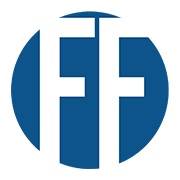In Chapter 2 of his book The Skillful Teacher, Stephen Brookfield (2015) identifies 4 core assumptions that he considers fundamental to skilled teaching. These assu mptions are that:
mptions are that:
#1 – Skillful teaching is whatever helps students learn.
Brookfield suggests that at times we need to step outside of what has worked in the past or what we feel is the “expected” way to teach, in order to face whatever challenges a particular class brings. He presents the example of a resistant class, where he brings in a panel of students from a previous class who were initially resistant but later found value in the course. He introduces the panel and then leaves, which allows the students to communicate openly.
#2 – Skillful teachers adopt a critically reflective stance toward their practice
Brookfield identifies four lenses to look through when critically reflecting on practice. These include: (1) the students’ eyes (using various classroom research techniques; (2) The perspective of colleagues (through team teaching/debriefing or through classroom observation; (3) educational literature (ranging from teaching narratives to theories); and (4) considering our personal experiences as learners.
#3 – Teachers need a constant awareness of how students are experiencing their learning and perceiving their teacher’s actions
Utilizing various means of obtaining anonymous feedback, in order to know where students are at. Brookfield has developed a tool called the Critical Incident Questionnaire (CIQ) for this purpose, which will be highlighted in a separate post.
#4 – College students of any age should be treated as adults
Regardless of whether students are at the beginning stages of adulthood, or well situated, it is important to treat students as adults. Teachers should be authoritative but not authoritarian. Students want to be treated with respect, however they want to be able to respect and trust the knowledge and experience of the teacher.
Although these “assumptions” are broad, these can serve as a general guide for teaching practice.
From:
Brookfield, S. D. (2015). The skillful teacher: On technique, trust and responsiveness in the classroom. San Francisco:Jossey-Bass.

 The following is an excerpt from the Occupational Safety Group, Inc (OSG) blog post: Five Trends in Adult Learning to Help Your Training Efforts in 2018. While this post is focused on workplace training, it is equally applicable to any learning environment.
The following is an excerpt from the Occupational Safety Group, Inc (OSG) blog post: Five Trends in Adult Learning to Help Your Training Efforts in 2018. While this post is focused on workplace training, it is equally applicable to any learning environment.
 Recently I discovered an excellent resource from Magna Publications, called Faculty Focus: Higher Ed Teaching Strategies by Magna Publications. There are excellent resources on a wide range of topics:
Recently I discovered an excellent resource from Magna Publications, called Faculty Focus: Higher Ed Teaching Strategies by Magna Publications. There are excellent resources on a wide range of topics: There is no escaping the many ways that technology has entered the classroom. In a recent discussion with some teaching colleagues, the majority have accepted that students have a powerful tool at their fingertips and as educators this tool can have many applications in the classroom. The following link to a blog post by Victotia Ingalls (2019) is a great illustration of this. By posing a problem to have the class solve in groups and then post a quick video to a shared Google drive, the instructor not only promotes active and collaborative learning but also receives formative assessment regarding comprehension of the problem. Ingalls does indicate that there are a few that might be encountered such as ensuring that the chosen video app is available on both iOs and Android operating systems and sluggish wifi. Overall though, definitely a strategy worth trying.
There is no escaping the many ways that technology has entered the classroom. In a recent discussion with some teaching colleagues, the majority have accepted that students have a powerful tool at their fingertips and as educators this tool can have many applications in the classroom. The following link to a blog post by Victotia Ingalls (2019) is a great illustration of this. By posing a problem to have the class solve in groups and then post a quick video to a shared Google drive, the instructor not only promotes active and collaborative learning but also receives formative assessment regarding comprehension of the problem. Ingalls does indicate that there are a few that might be encountered such as ensuring that the chosen video app is available on both iOs and Android operating systems and sluggish wifi. Overall though, definitely a strategy worth trying. According to best selling author Susan Cain, approximated one third to one half of all people are introverts. What does this mean in the classroom and in the workplace?
According to best selling author Susan Cain, approximated one third to one half of all people are introverts. What does this mean in the classroom and in the workplace? According to this quote Elizabeth Barkley (2010, p. 15) student motivation is the key to their engagement. But what contributes to their motivation? Barley proposes that it is the product (not the sum) of how much they value the task and how much the student expects to succeed. So as instructors, identifying whether students perceive value in the course, its activities and assignments as well as ensuring that they expect that they can succeed is the entry point to engaged learning.
According to this quote Elizabeth Barkley (2010, p. 15) student motivation is the key to their engagement. But what contributes to their motivation? Barley proposes that it is the product (not the sum) of how much they value the task and how much the student expects to succeed. So as instructors, identifying whether students perceive value in the course, its activities and assignments as well as ensuring that they expect that they can succeed is the entry point to engaged learning.